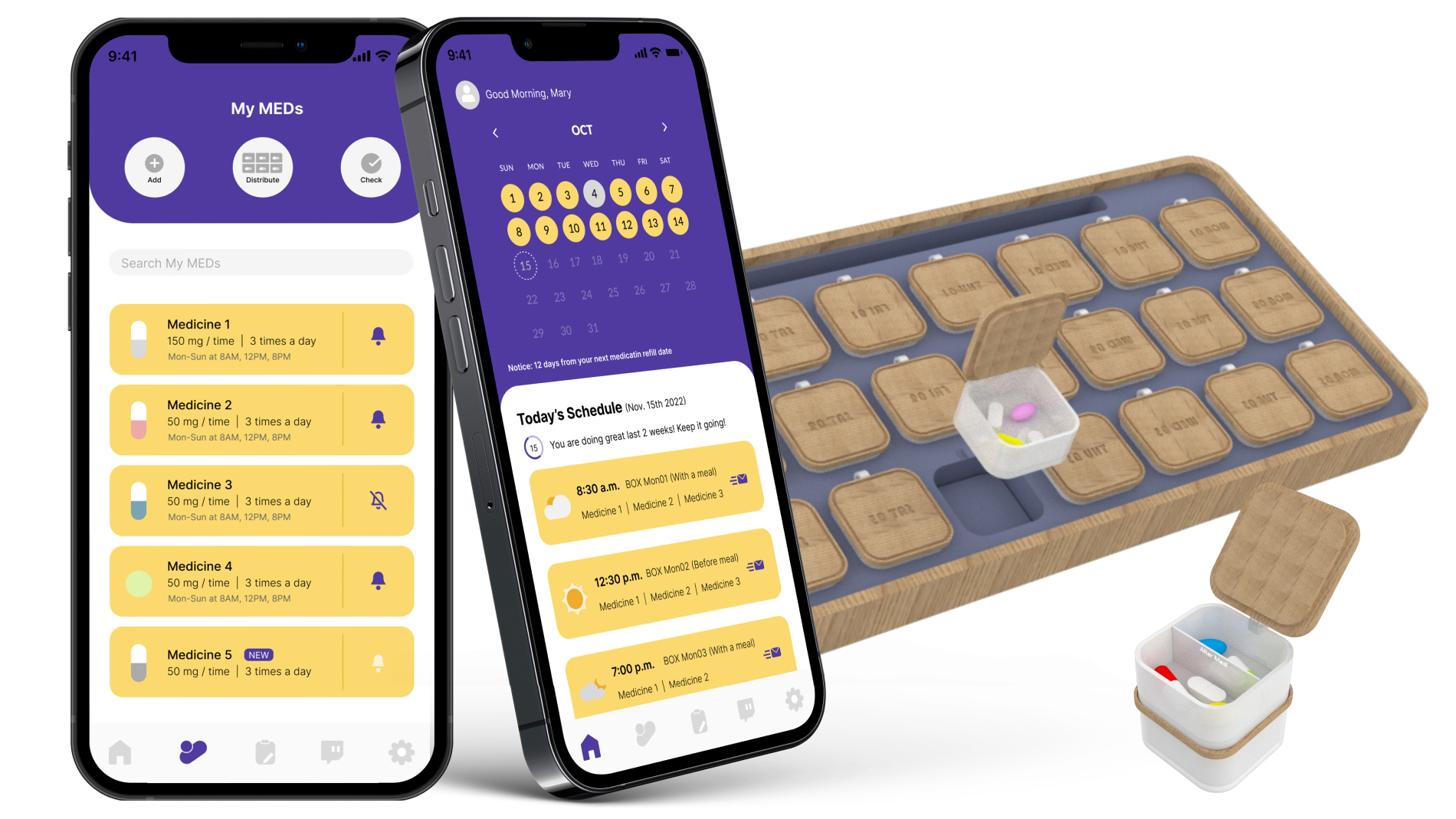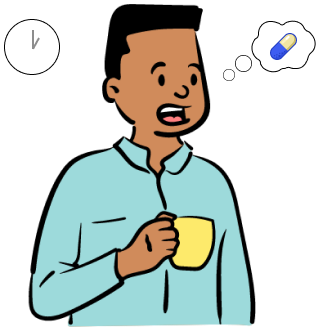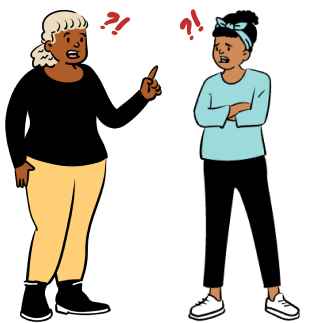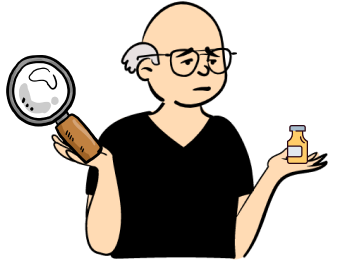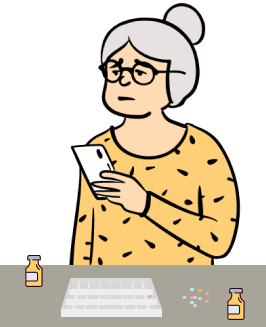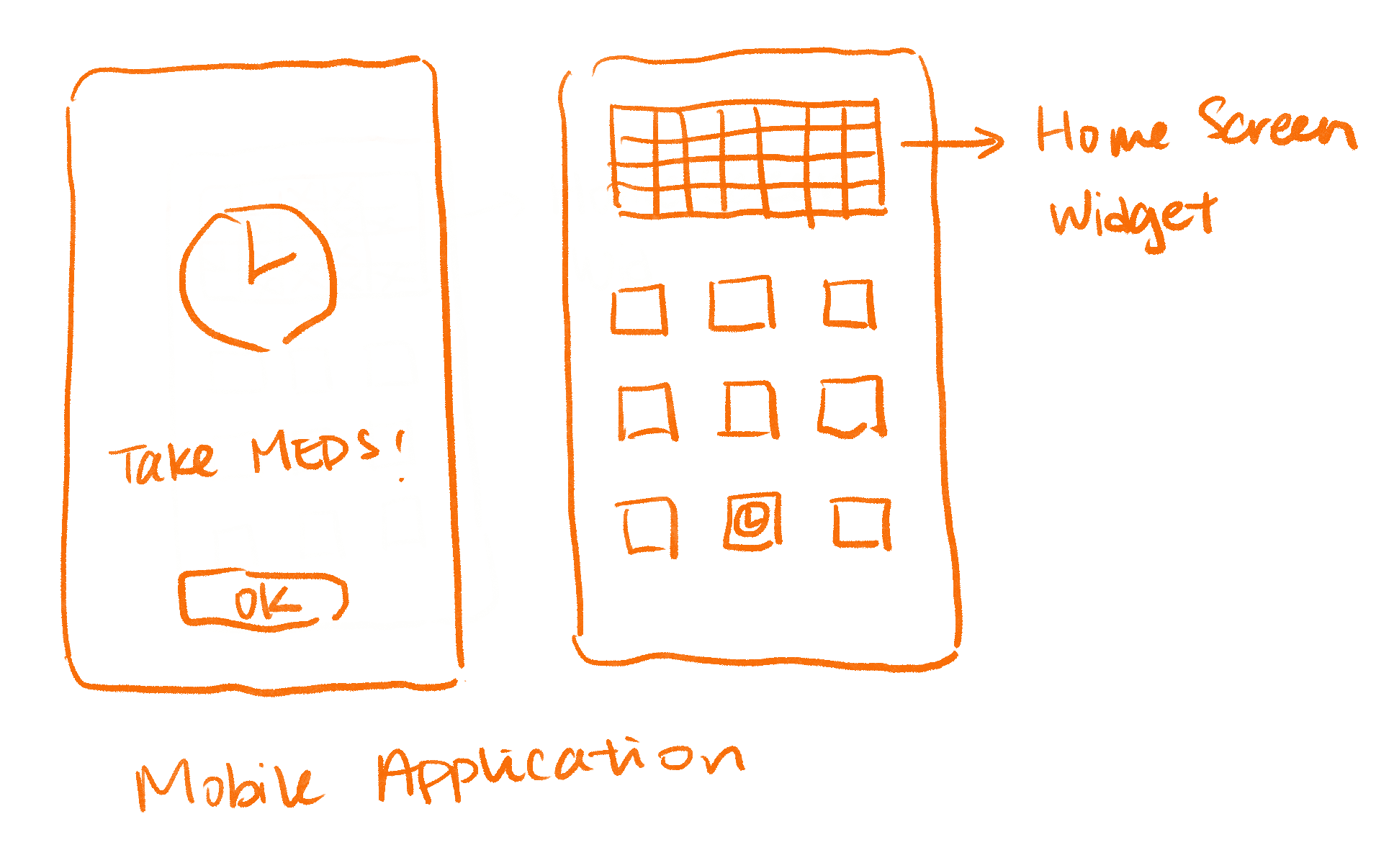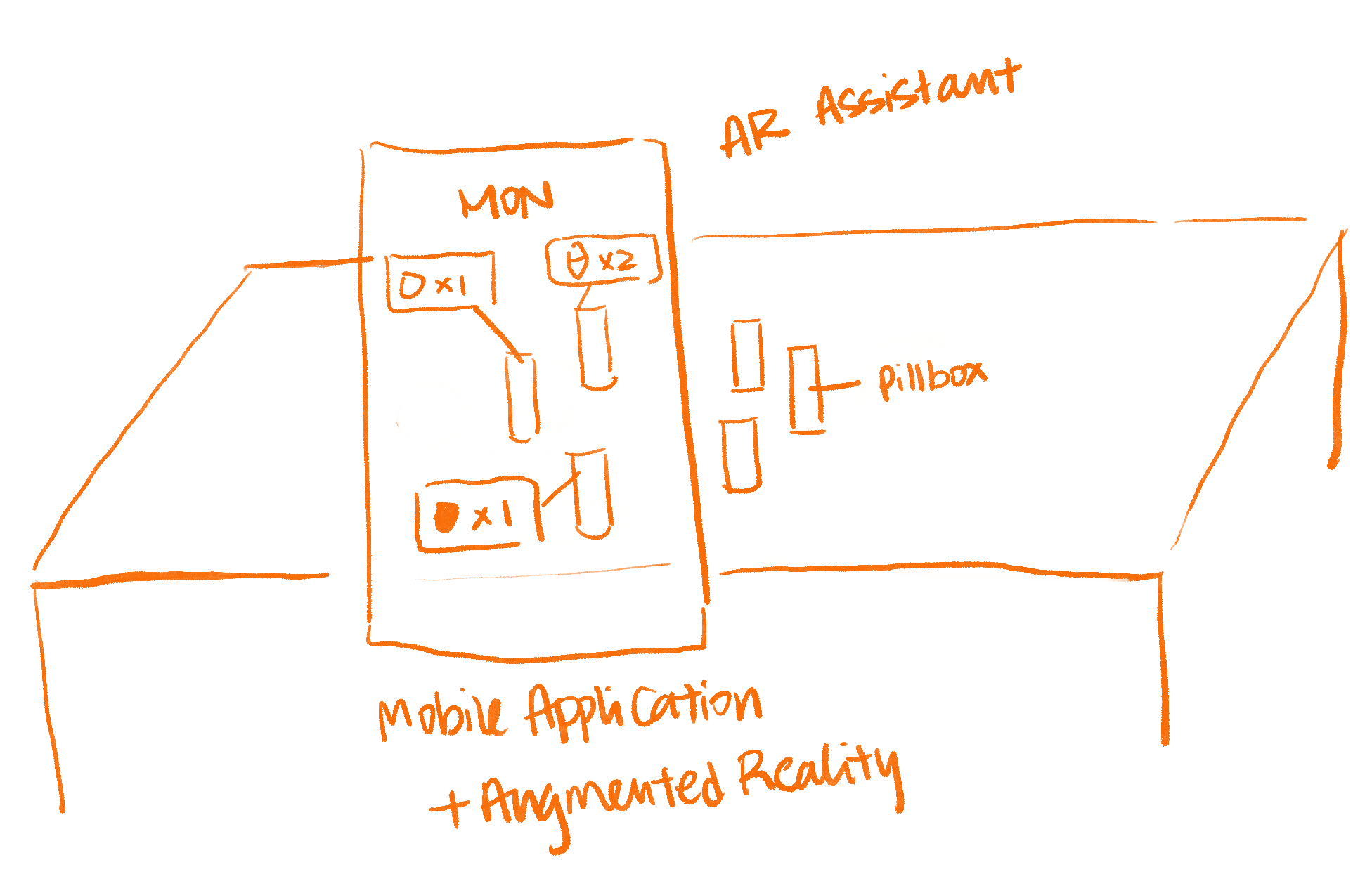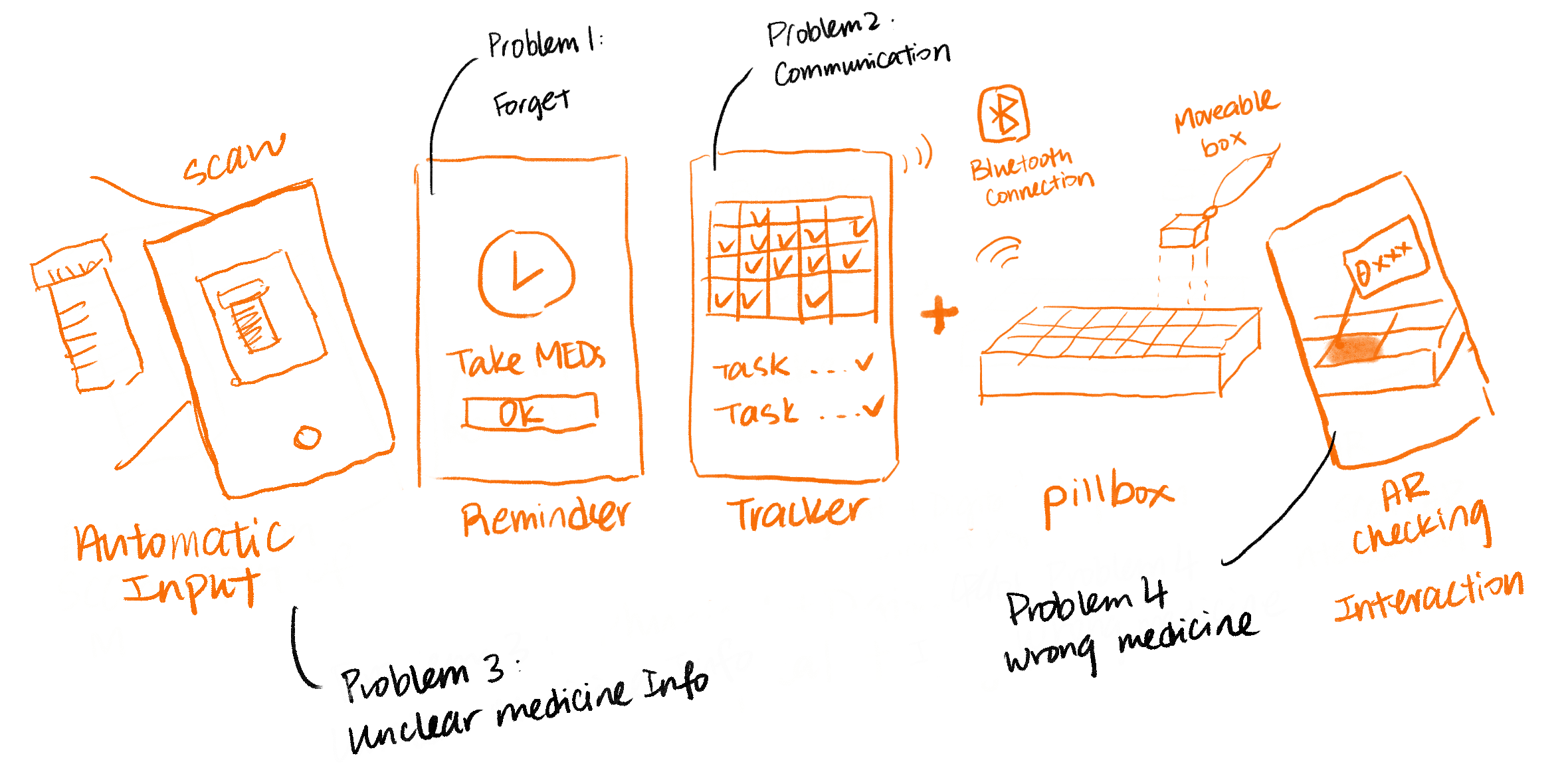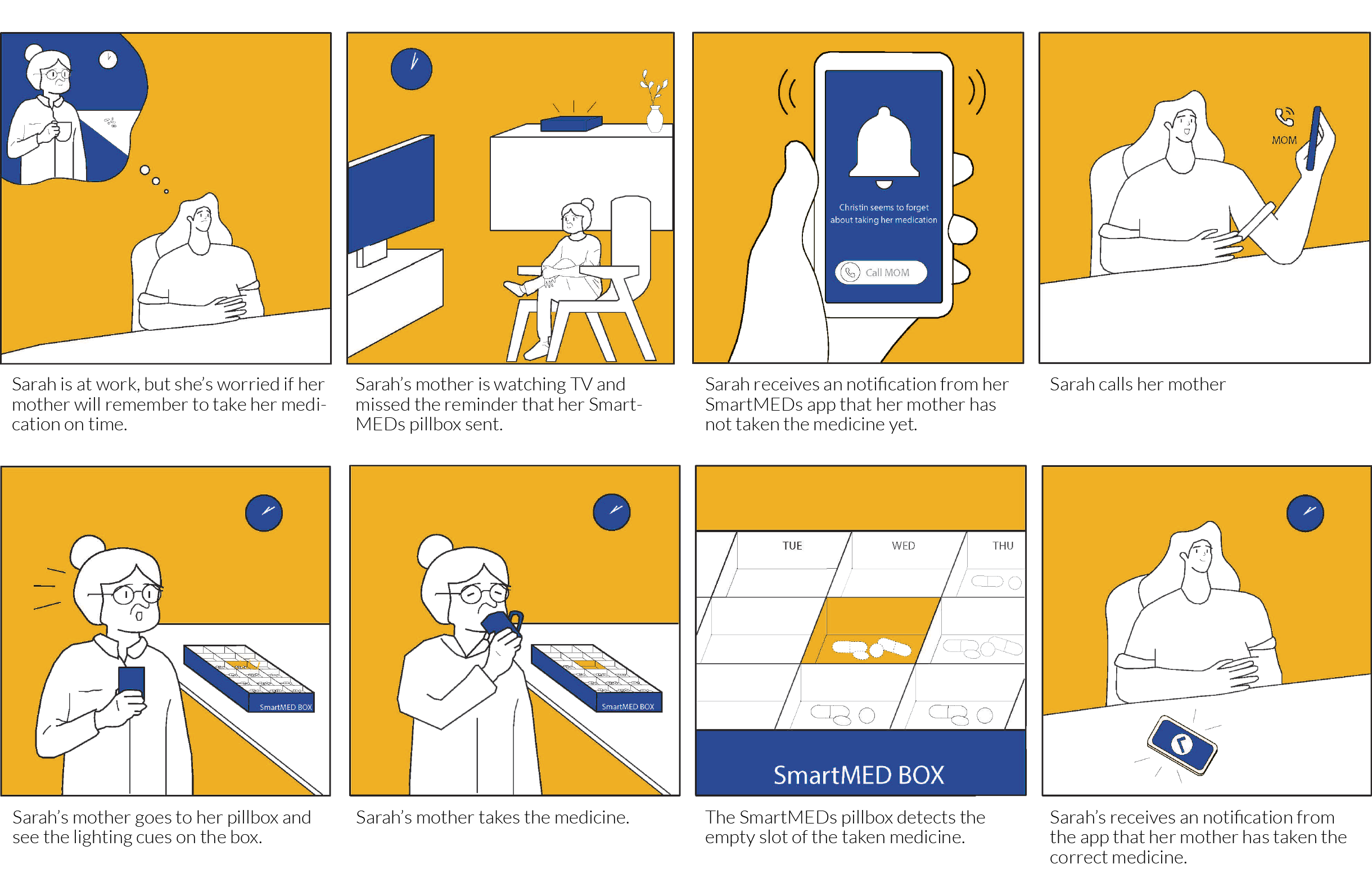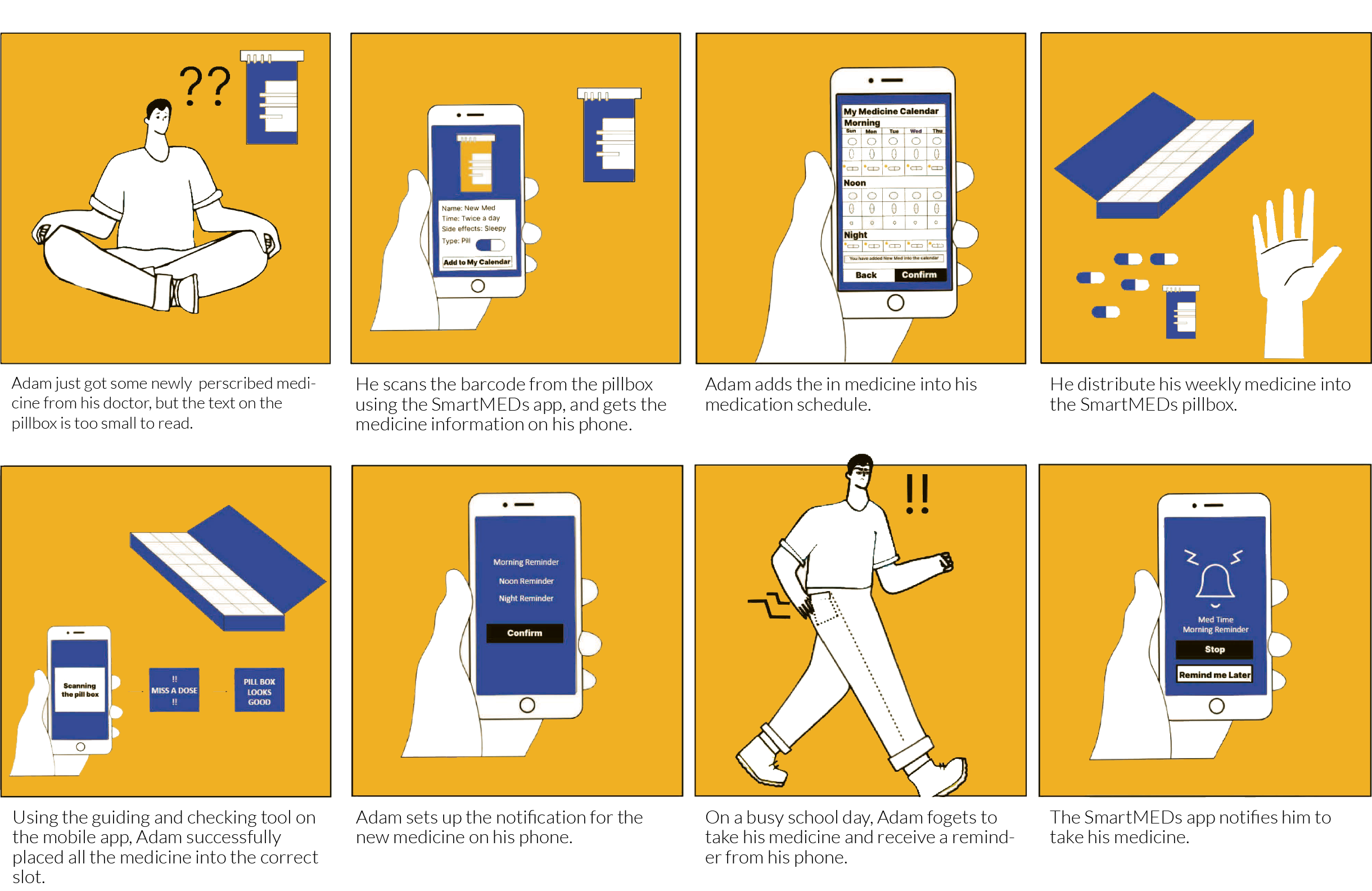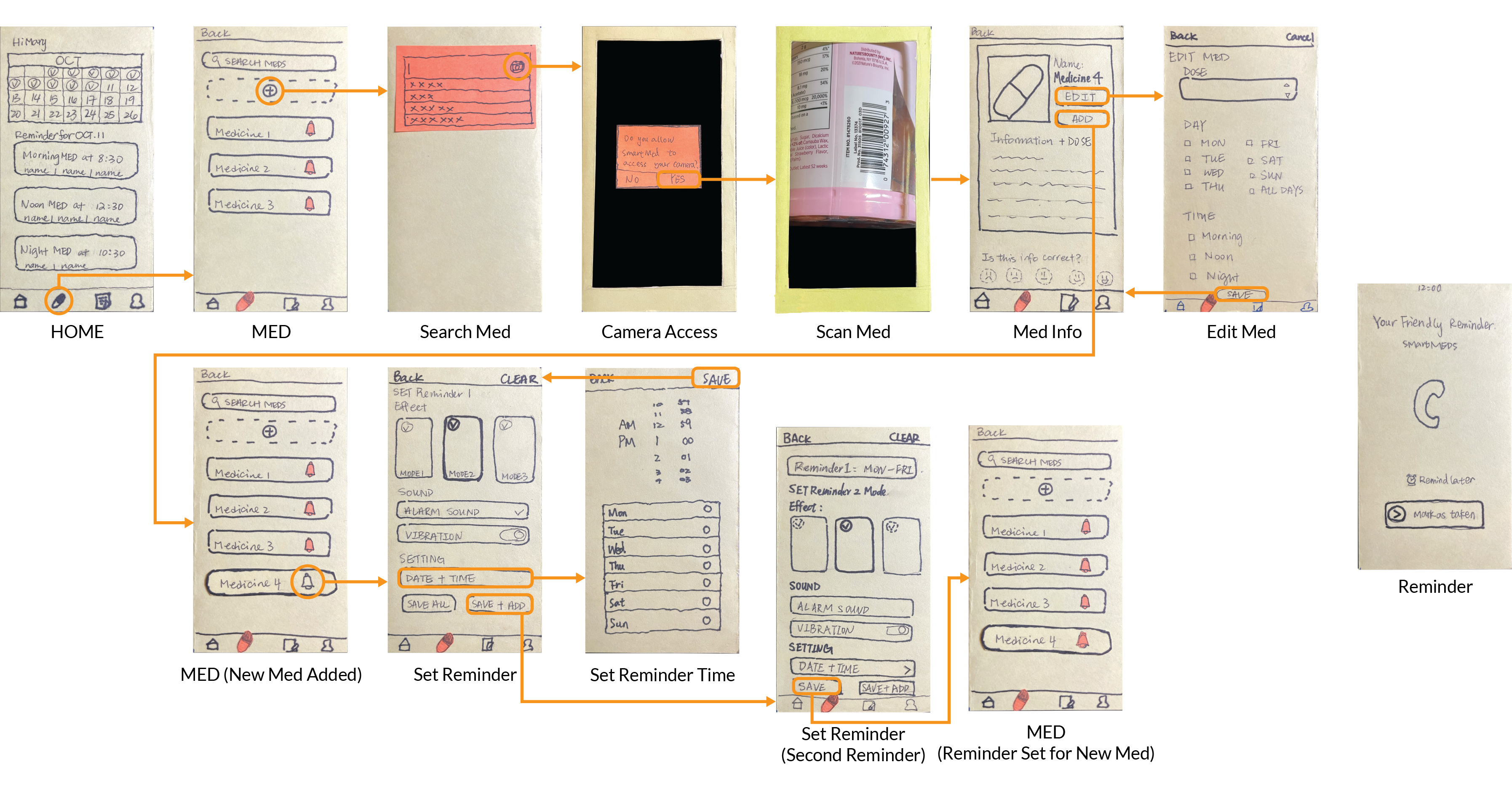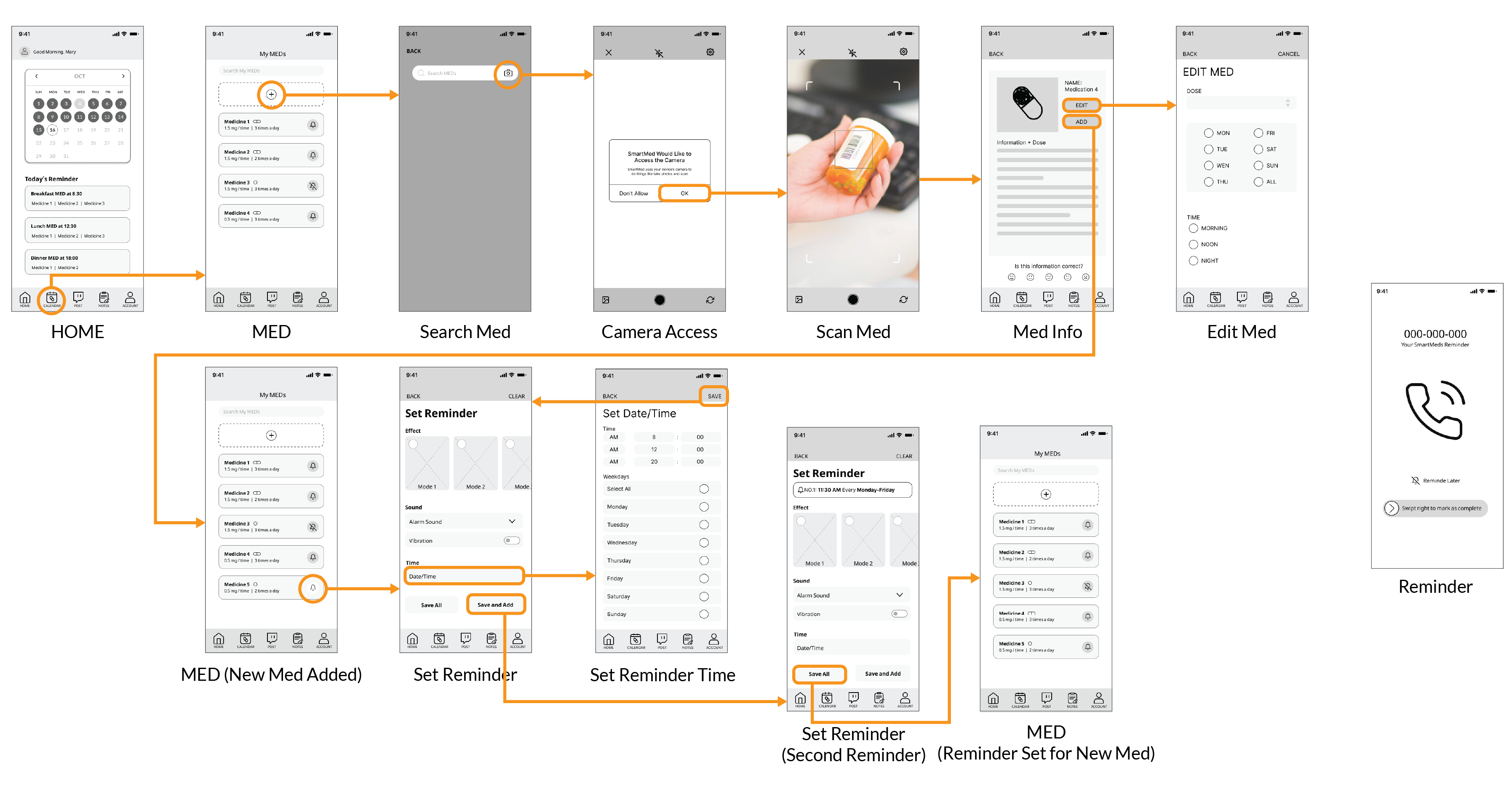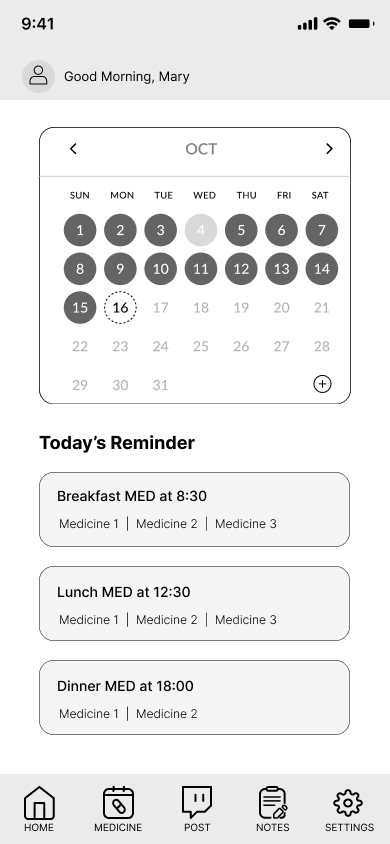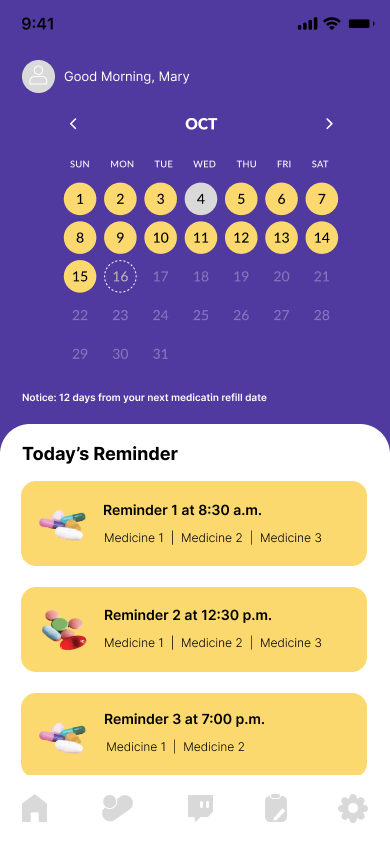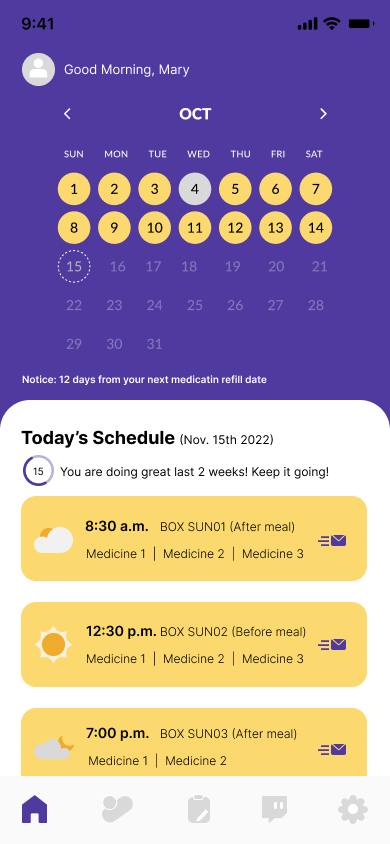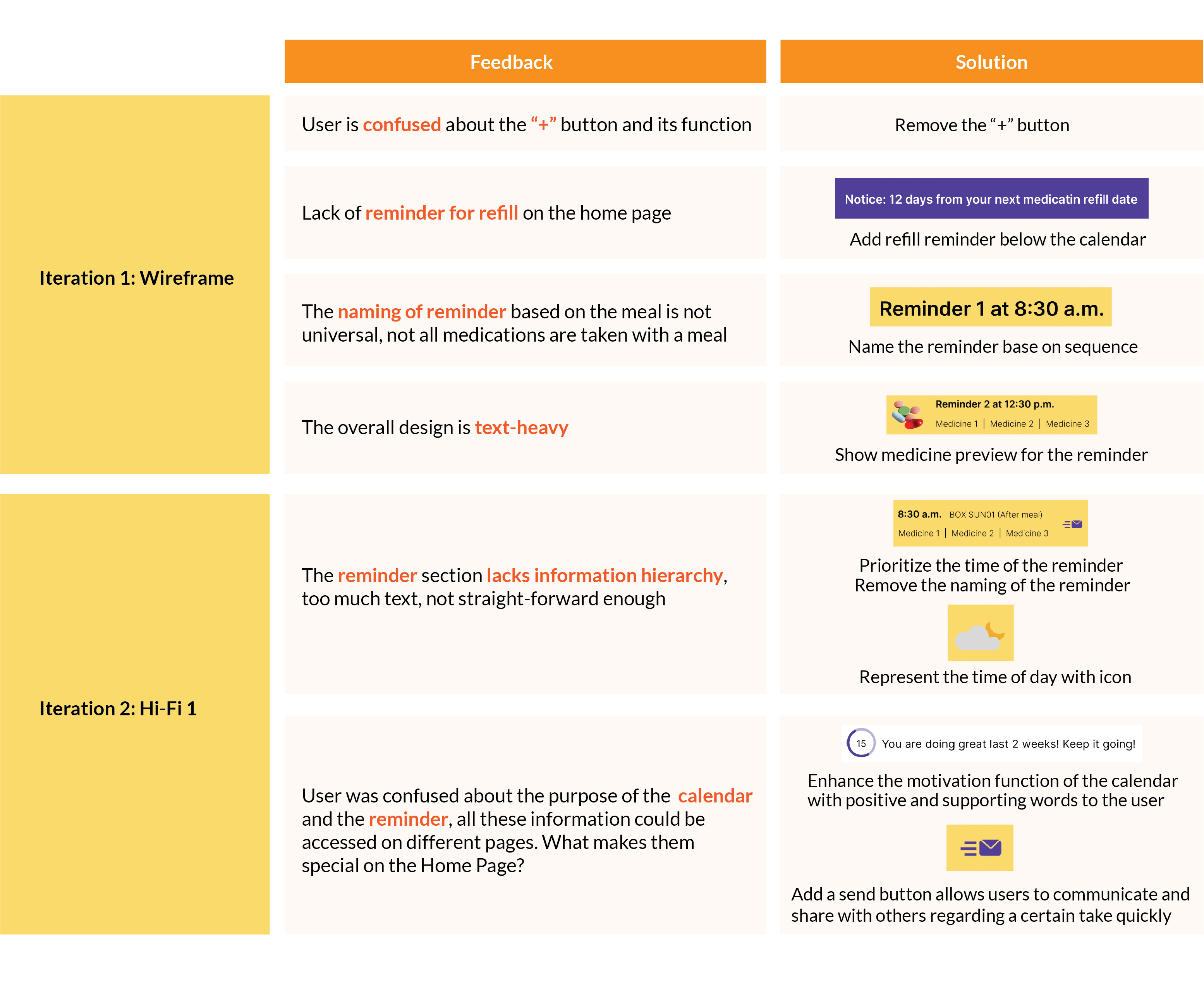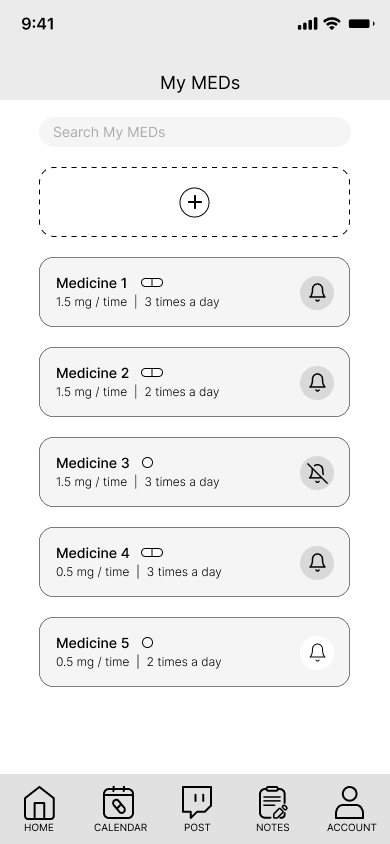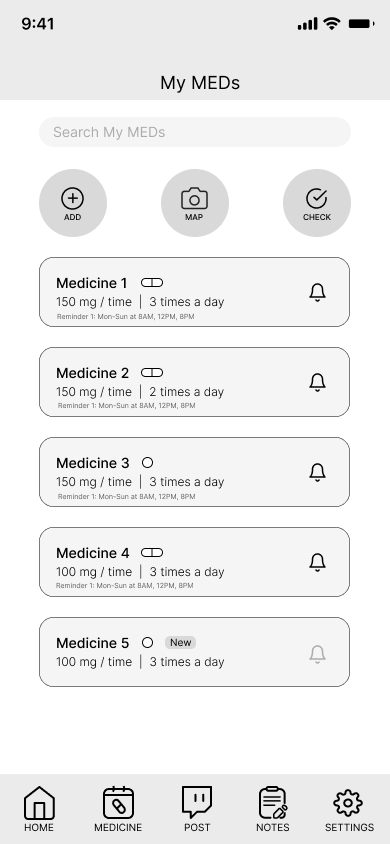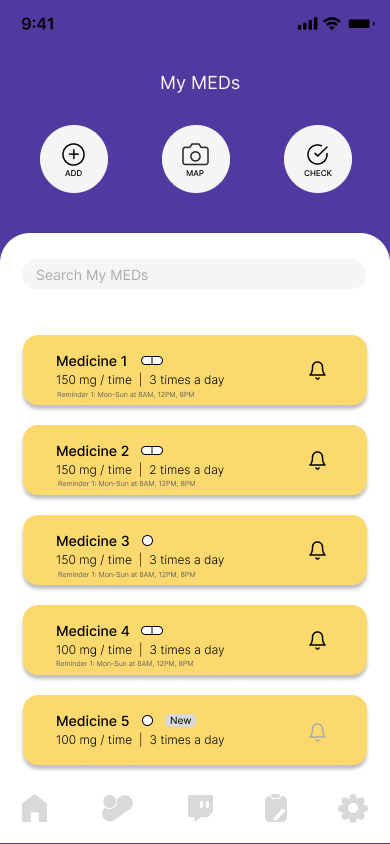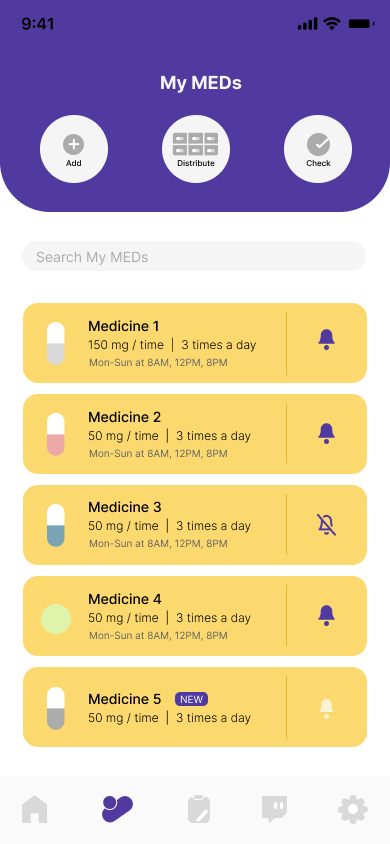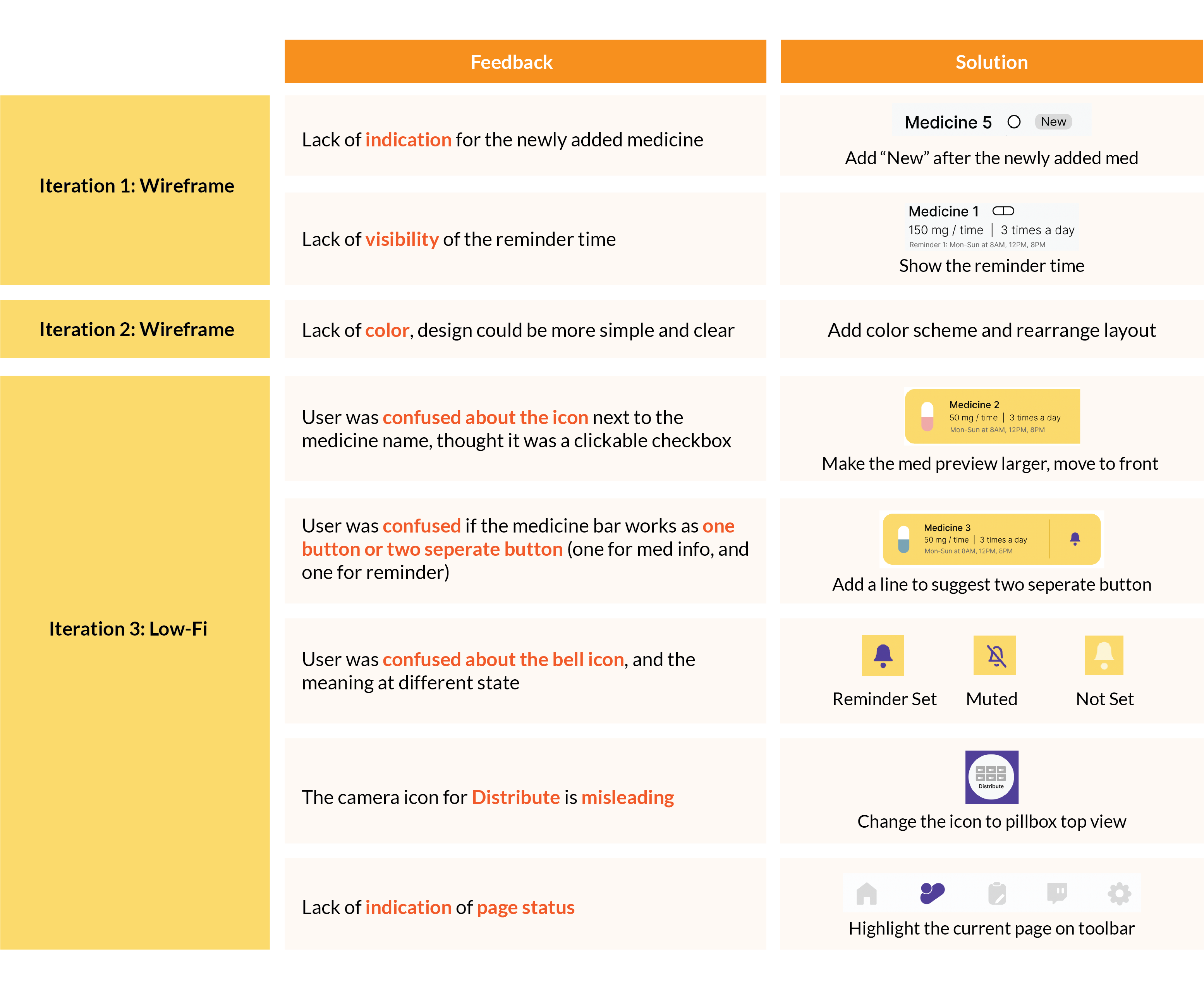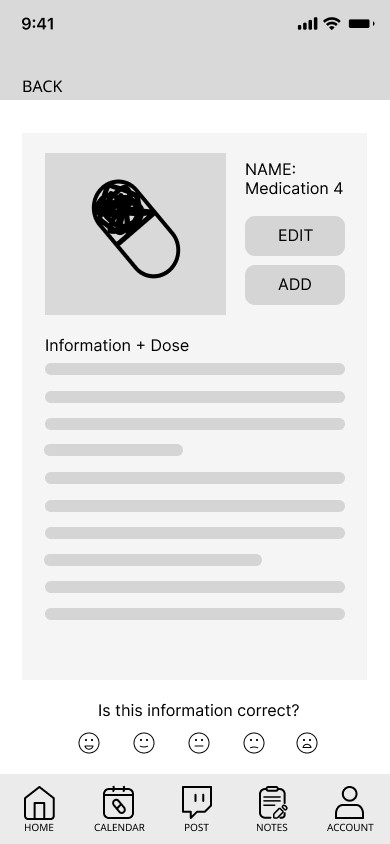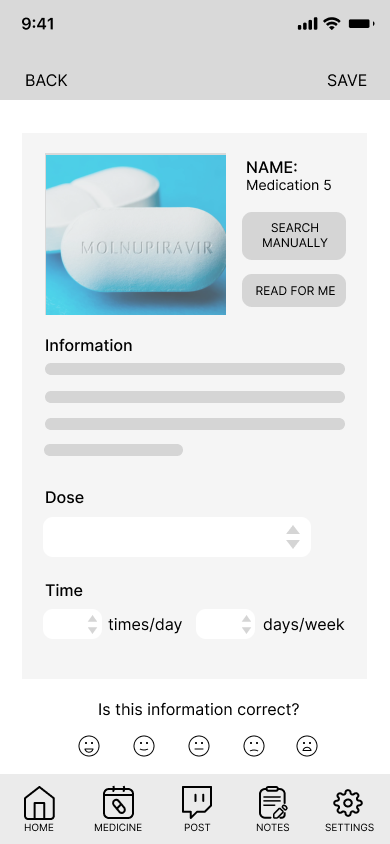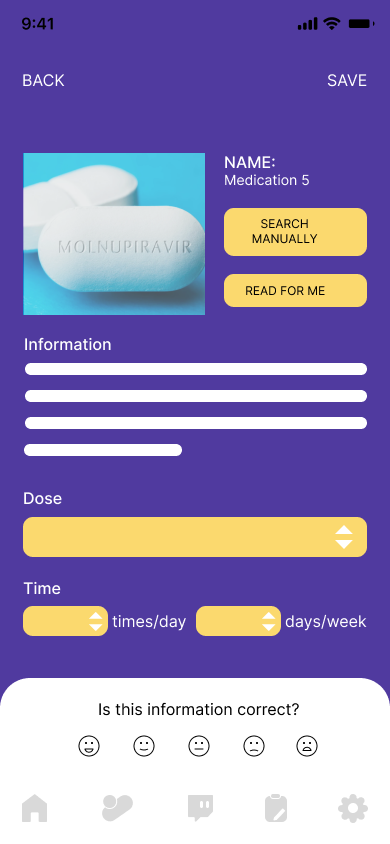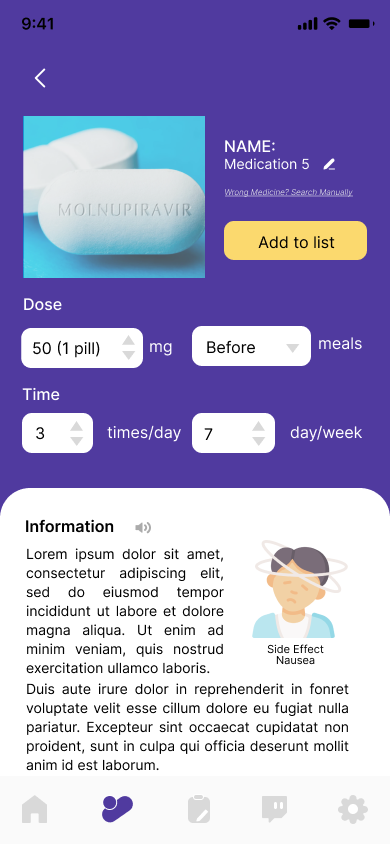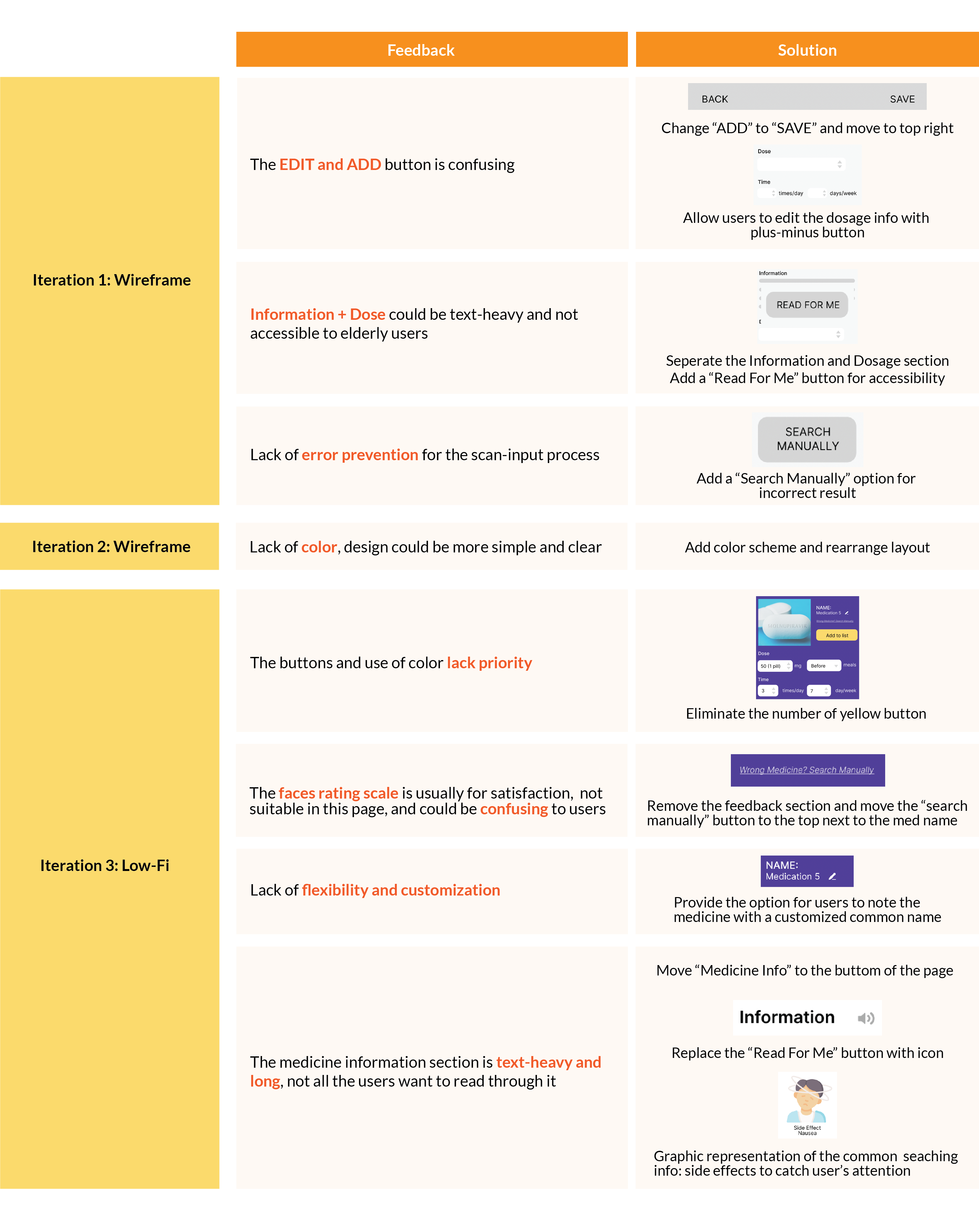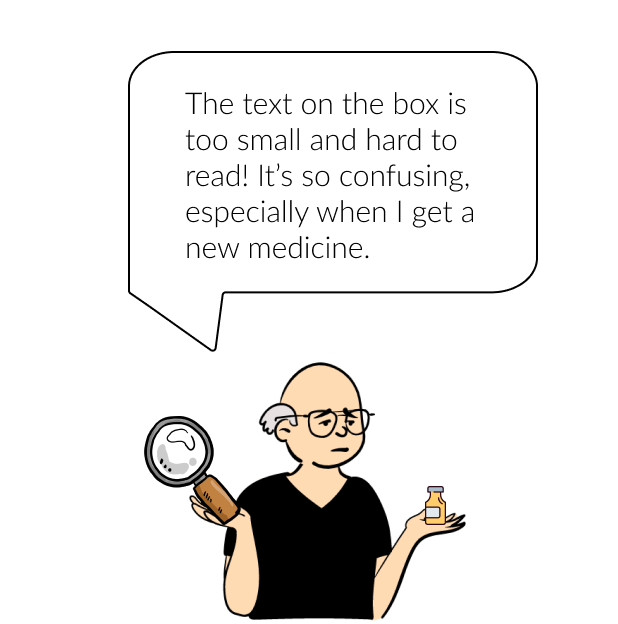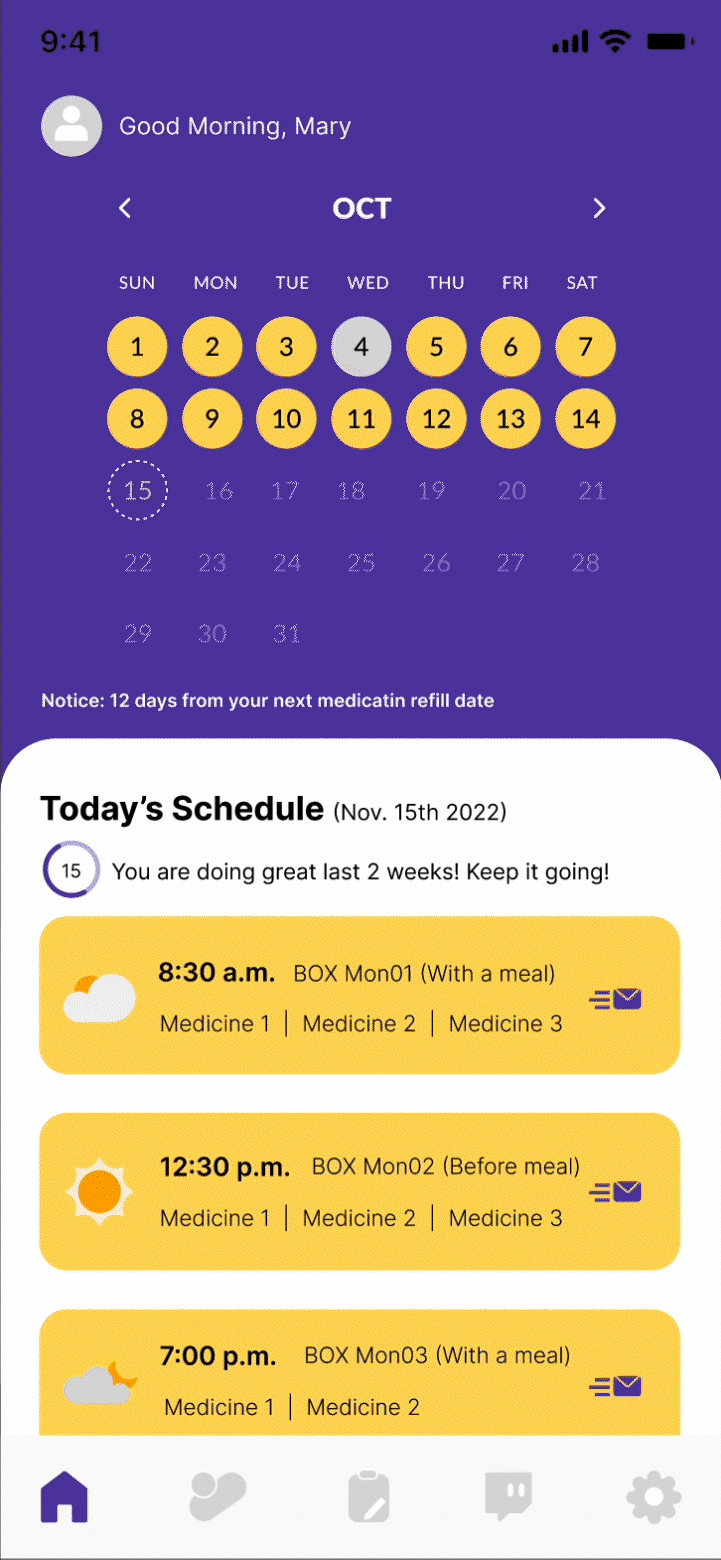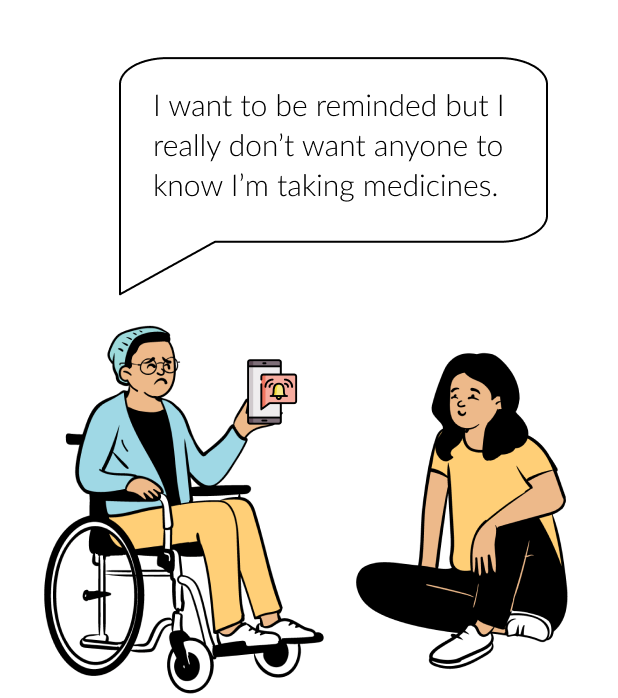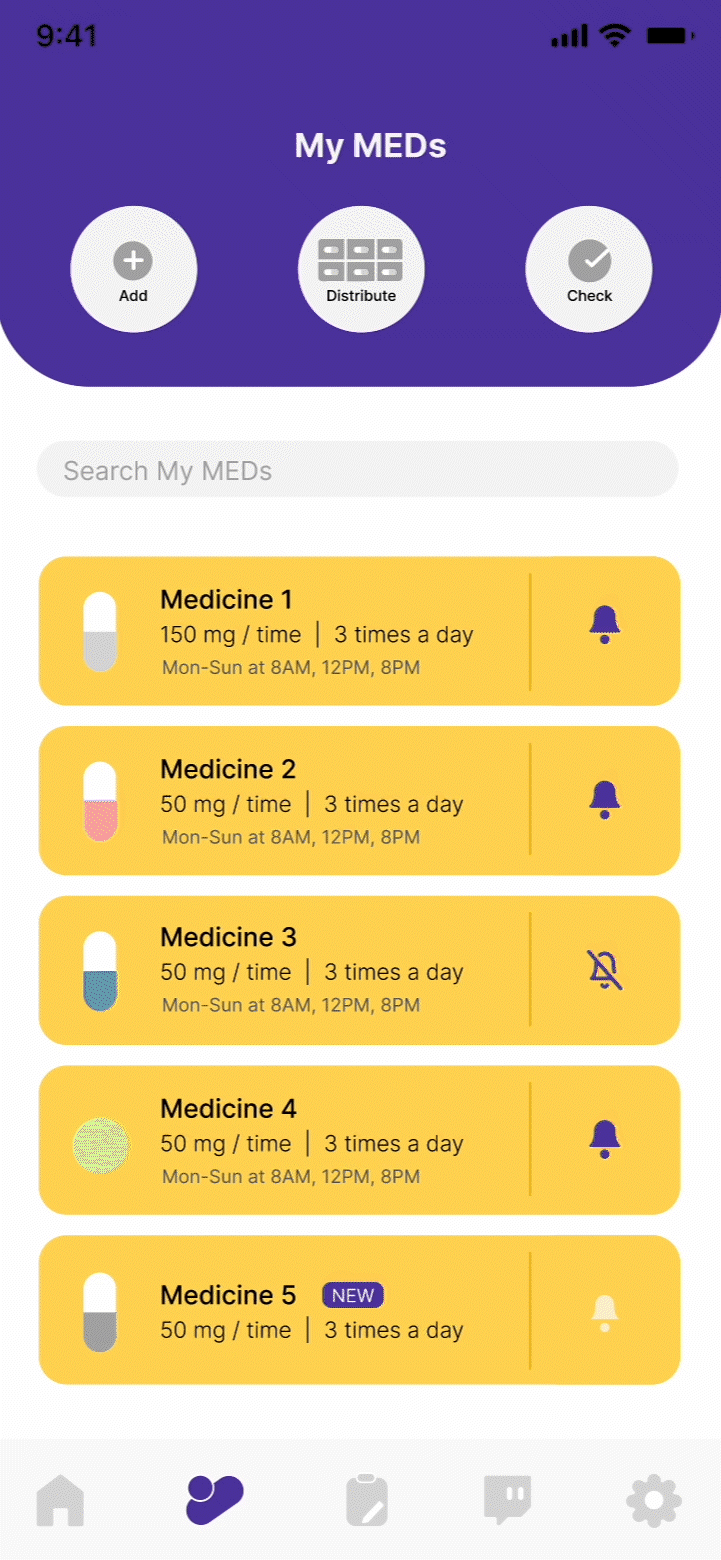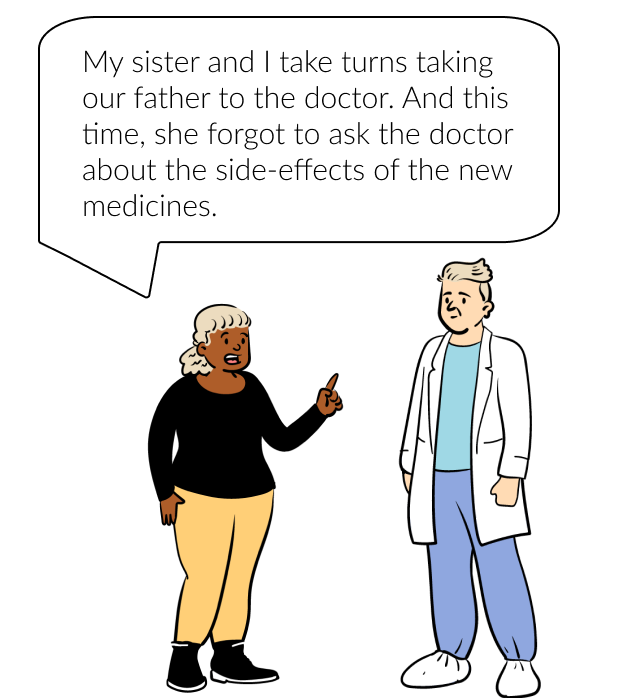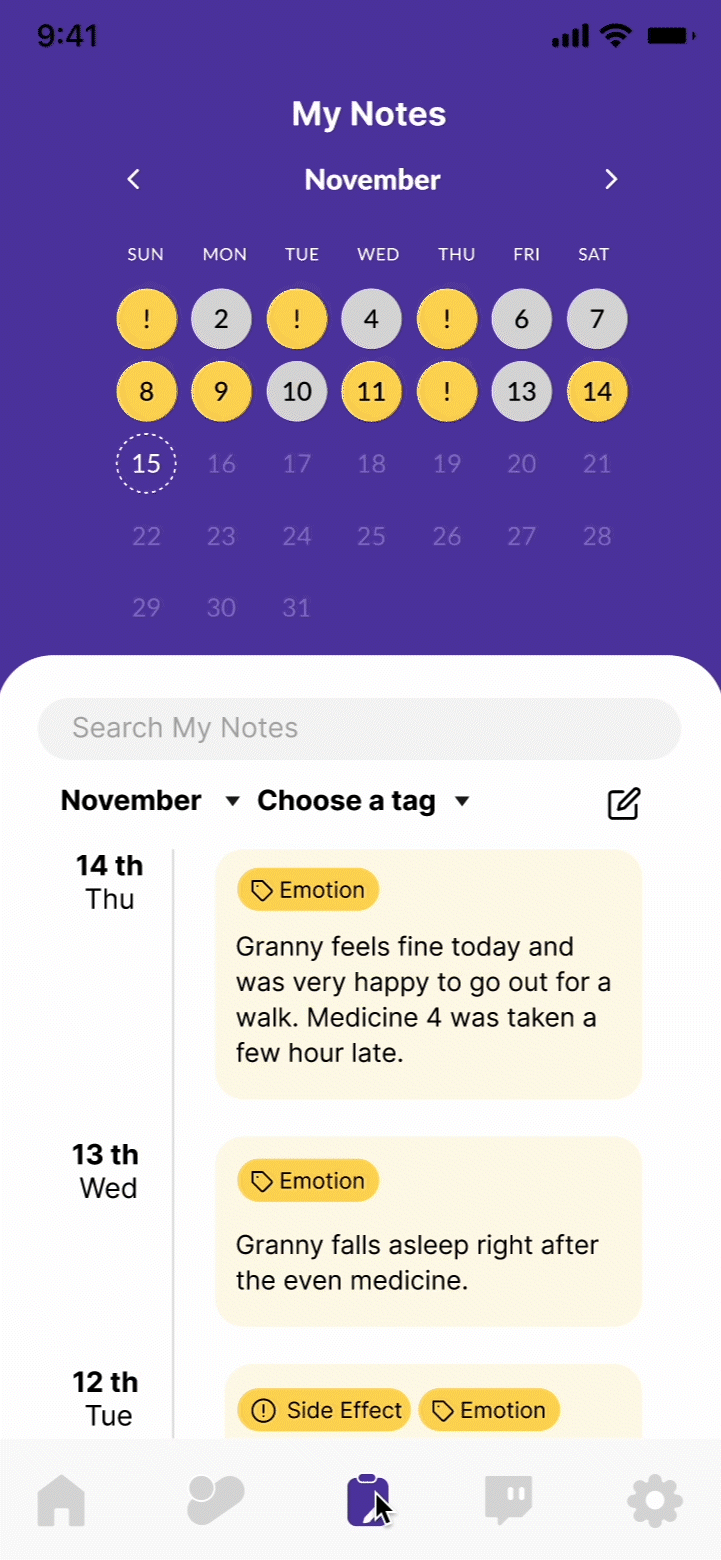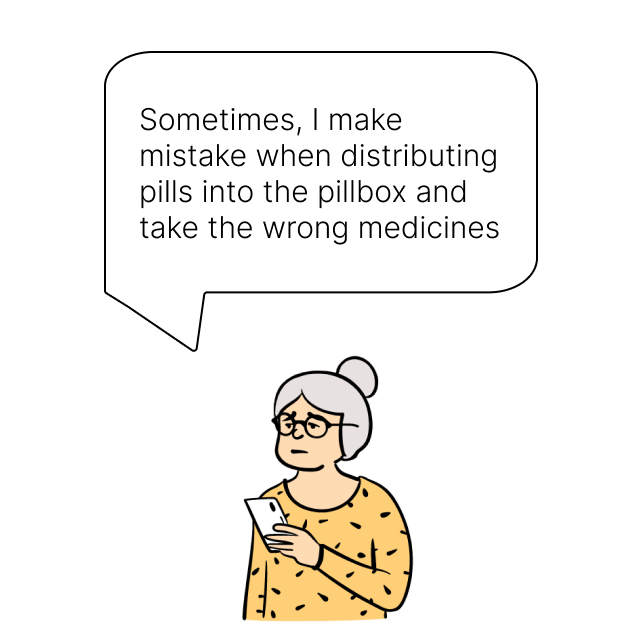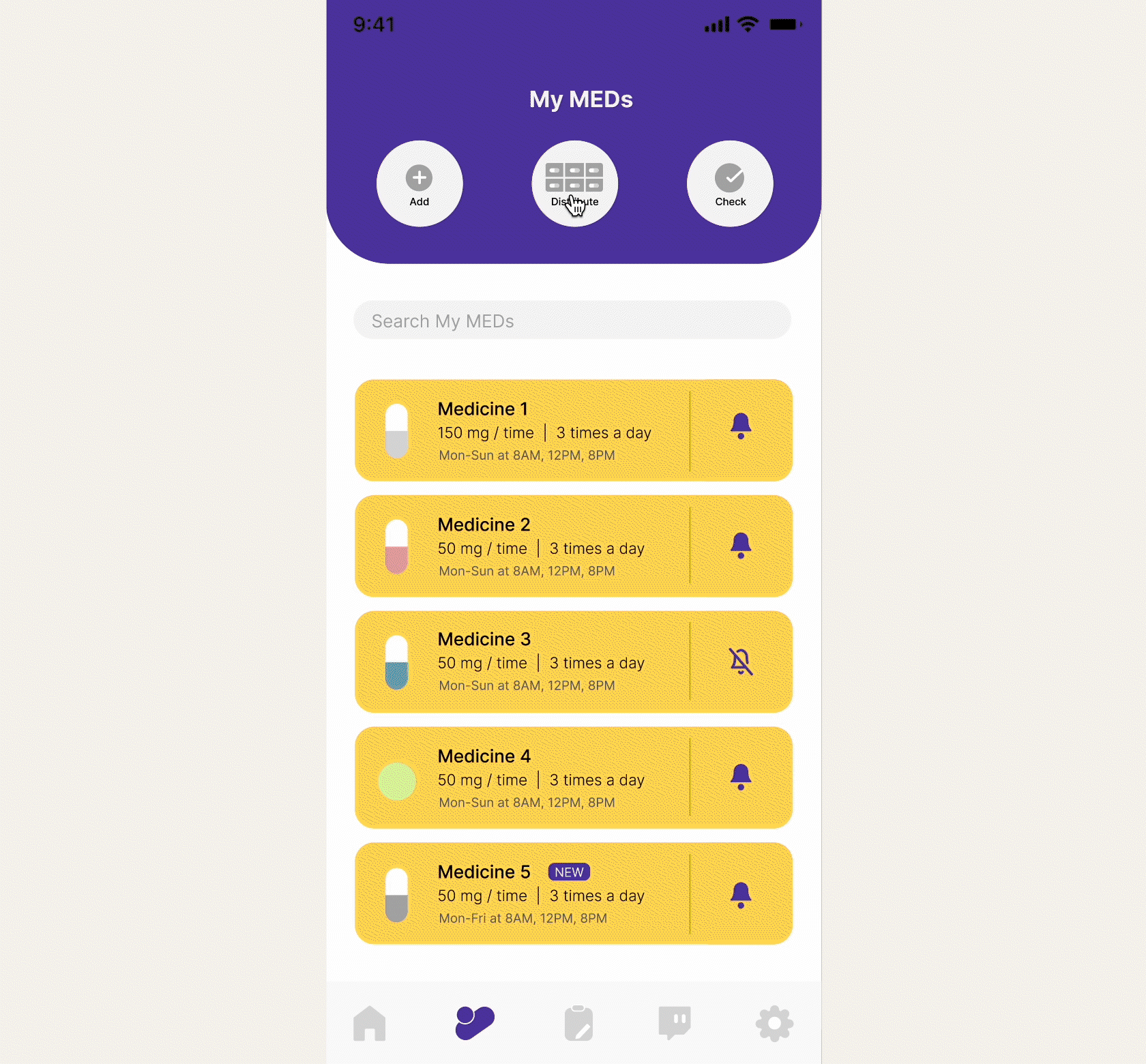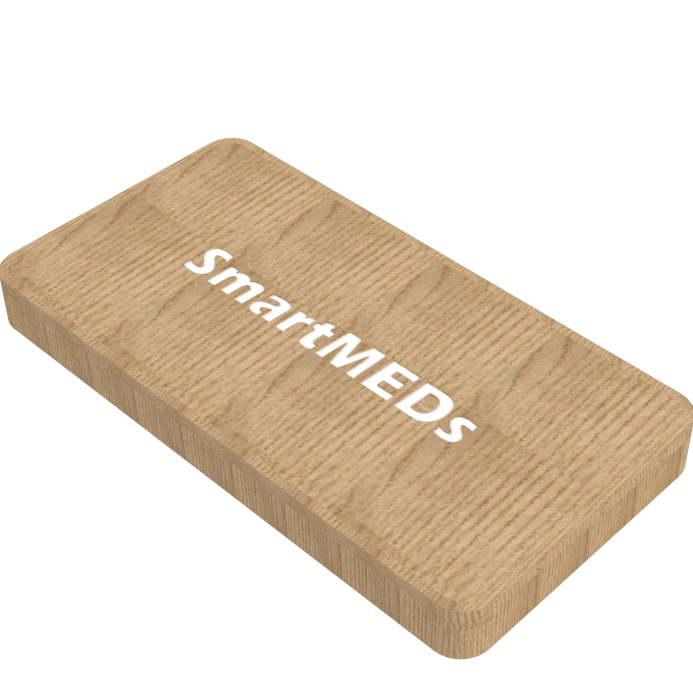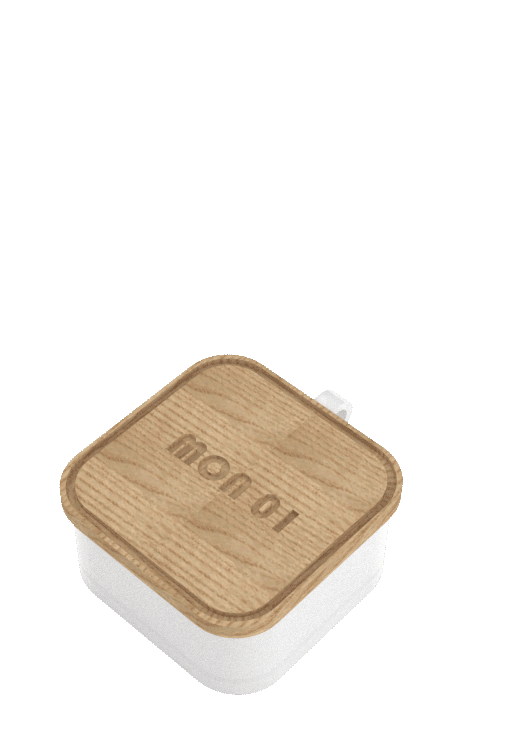“I set an alarm every time, so it's much better, but sometimes I still forget”
"There were a few times when my grandfather asked me and my sister to buy pills for him at night because we forgot to refill the bottle.”
“My time for lunch is not regular so I cannot set an alarm to remind myself. There were several times that I forgot to take my medication at noon."
“When the doctor asked me about my grandfather's medicine, I wasn't able to remember everything."
“My grandfather did complain about the side effects and he was reluctant to take medicine because of that.”
“When I was at my worst, I could not tell what medicine I was taking and could not count how many pills there were.”
“One day my mom accidentally gave her pills to my dad because they had similar packages side by side.”
“It is really common that me and my sister both forgot to give my grandfather his medicines, sometimes we took care of him at different times and didn't communicate well.”
“I did not pay enough attention to the side effects until my dizziness got very serious and I fell over. I wish I could know in advance and communicate with my doctor sooner to avoid it.”
“I have a friend that was cut off from medication by her parents several times when she got better, because they thought she was cured.”
“Being aware of the side effects is very important. I was overdosed on medication due to side effect one time... I needed to be hospitalized and change medication.”
